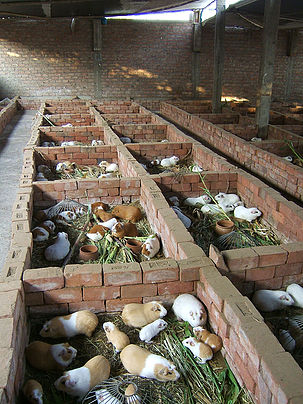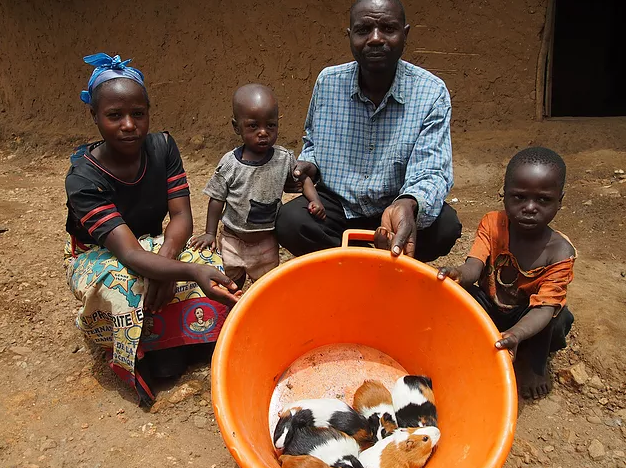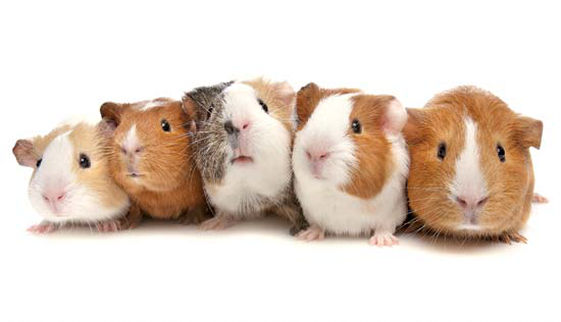Guinea Pig: Friend or Food?
September 29, 2019 - 8 minutes readEliza Wood of Peru Ecocamp offers an interesting essay on one of Peru’s favorite foods.
Some of you will be mortified by the thought of eating your childhood pet, but others will wonder why I’m even posing the question. Whichever group you fall in will undoubtedly depend on your location. Here in Peru, the cuy (pronounce: ku-wee) or guinea pig is not only a common source of food, but also very popular.
One evening, while questioning my colleagues in Pincopata Ecocamp about life here in Peru, the topic of food came up. When probed about their favorite foods, the usual culprits were mentioned: ceviche, trucha (trout) and lechon (roast pig). However, guinea pig was mentioned by every single person without exception. When delving deeper into the preparation and cooking of their favorite meat, cuy al horno (oven-cooked) was the landslide winner, however fried guinea pig is also a popular choice.
 There are many reasons for the popularity of the meat. Firstly, guinea pigs are incredibly easy to raise. The guinea pig farms which are spread across Peru have a constant stream of animals to mate in order to keep the production line going.
There are many reasons for the popularity of the meat. Firstly, guinea pigs are incredibly easy to raise. The guinea pig farms which are spread across Peru have a constant stream of animals to mate in order to keep the production line going.
The animal becomes sexually mature at only one month old and usually has litters of four babies. Farmers only have to feed the small creatures for three months. Some prefer to wait four to five months, but any longer and the animals are considered past their prime. Therefore, the life of a farm guinea pig is short lived and feeding costs remain low for the farmer.
Guinea pigs are also considered to be environmentally friendly livestock. A study into alternative meats by U.S. wildlife conservationist Matt Miller pointed out that raising guinea pigs is a great idea due to the small land size needed. While raising cattle requires large amounts of space and drains resources, the guinea pig is a low-impact protein source. Miller’s study concludes that, ‘’Many animals that some consider ‘bizarre’ or ‘unconventional’ make a lot more sense — ecologically, economically, personally — to eat than modern, industrial meat.”
Finally, guinea pig is incredibly good for you. In fact, it’s considered one of the world’s healthiest meats. It contains next to no cholesterol and large amounts of protein. This is another reason for its popularity in Peru’s rural regions. Traditionally life in the countryside entails long days and many hours of work spent under intense heat or ceaseless rains across the changing seasons and therefore workers need a solid diet.
 How does it taste? Well, after managing to successfully avoid guinea pig on my first trip to Peru a few years ago, this year I have indeed tried it.
How does it taste? Well, after managing to successfully avoid guinea pig on my first trip to Peru a few years ago, this year I have indeed tried it.
Despite everyone’s best efforts to excite me about the event, I still dreaded it. I saw the tiny carcass arrive as it was transported into the kitchen. Note to self: avoid the oven for the next hour to prevent being startled by the unseemly, yellow teeth or rigidly fixed feet of the little creature as its skin begins to turn a traditional crisp brown.
As a person who rarely cooks meat — and when forced to, puts on a pair of rubber gloves and uses any available kitchen utensil to avoid any contact, or ropes in a housemate to do the dirty work — I never thought I would eat a chicken drumstick off the bone, let alone guinea pig.
Further, my first job in Peru involved working on a small farm near home, where I was given sole charge of the guinea pigs, who were lovingly cradled by child visitors three times a day and never once considered as the next meal.
However, after living in Peru for a few months I learned the true importance of the guinea pig in Andean culture and felt it was about time I put all of this to the back of my mind and give it a try.
When it came to eating, my wonderful host family — who by this point know my preference for all things green over anything that used to have a heartbeat — kindly offered me the part of the animal least easy to trace back to its days scuttling around on all fours. I had a quick glance across the table and spotted the head on the plate of the chef, my host mother, and made a conscious effort to remember not to glance that way for the remainder of the meal.
Guinea pigs cannot be described as big animals, but just like any mammal, they are made up on hundreds of bones. This makes the eating of the animal rather a task. One has to really pick at small bones to get to the fleshy meat. Opting to stick out like a sore thumb and really act the foreigner, I picked up my knife and fork and fumbled as I picked at the tiny bones while everyone else tucked in with their hands — the proper way to eat guinea pig.
 Guinea pig is quite unlike any other meat regularly consumed in Europe or North America. However, if forced to compare, then the closest would be duck. Both meats share a very tender, succulent texture. But the taste itself really is not comparable to anything else I’ve ever tasted. It’s definitely not unpleasant and most who try absolutely adore guinea pig. But it’s unusual taste, foreign to my rather unschooled taste buds, was not relished.
Guinea pig is quite unlike any other meat regularly consumed in Europe or North America. However, if forced to compare, then the closest would be duck. Both meats share a very tender, succulent texture. But the taste itself really is not comparable to anything else I’ve ever tasted. It’s definitely not unpleasant and most who try absolutely adore guinea pig. But it’s unusual taste, foreign to my rather unschooled taste buds, was not relished.
I definitely don’t regret trying guinea pig; it’s an important part of the diet here in Peru and holds a great cultural significance. In the cathedral in the center of Cusco you can even see a depiction of Jesus sitting down with his disciples to the last supper of guinea pig. However, I’m not rushing back to have it again and will definitely not be convincing farmers back home to begin breeding the animals for food.
There are certain countries that have looked to Peru and surrounding Andean countries for inspiration and taken a fancy to the concept of farming guinea pig. Due to its health benefits, the small animal offers a huge source of protein and could be the perfect solution to lack of nutrients and even starvation in some countries.
Therefore, I pose the question again: friend or food? Are the nutritional benefits, or perhaps just the adventure of trying this foreign food, enough to convince you to try this loveable, furry creature?

0 Comments